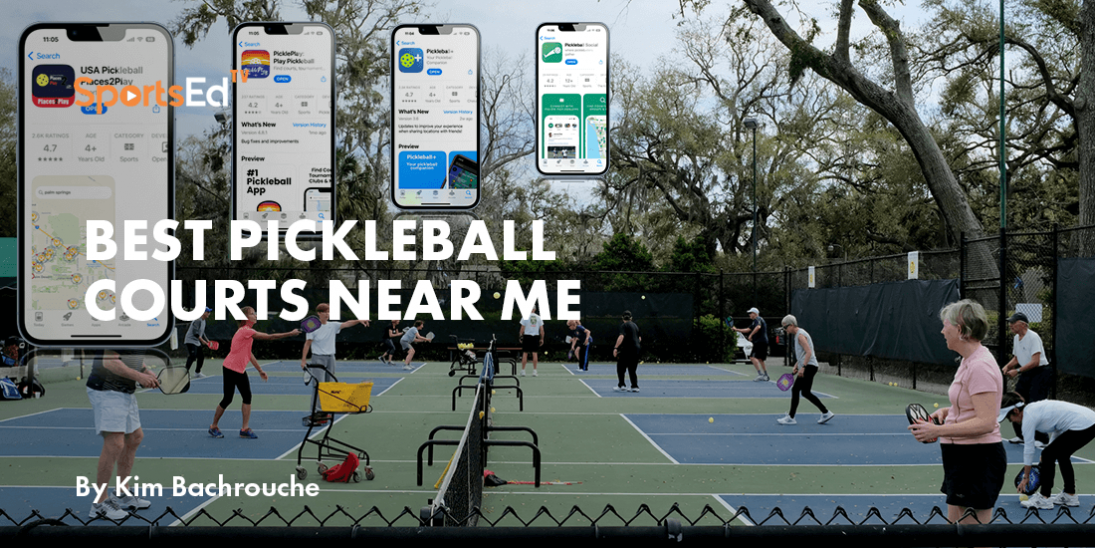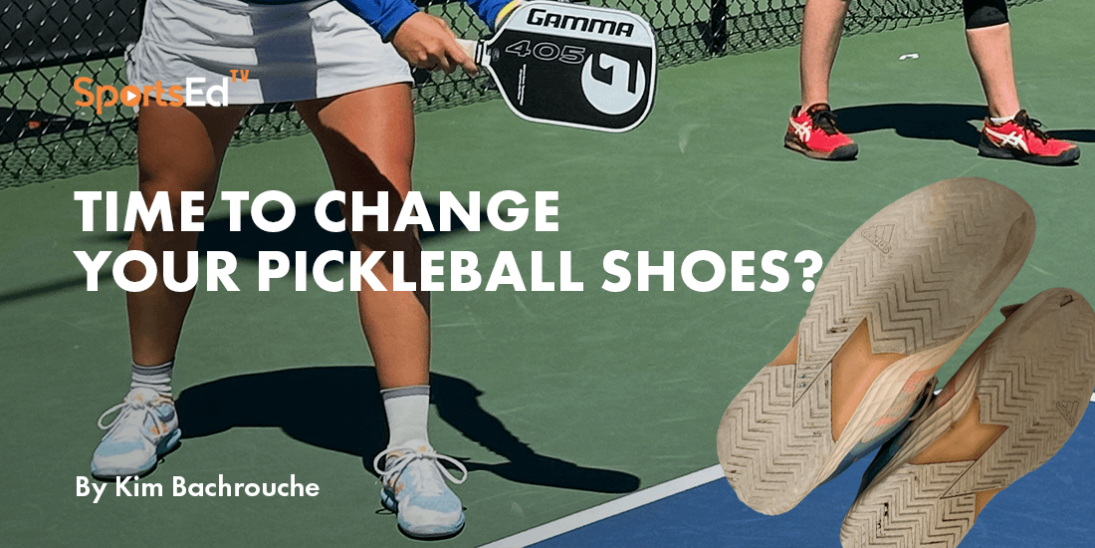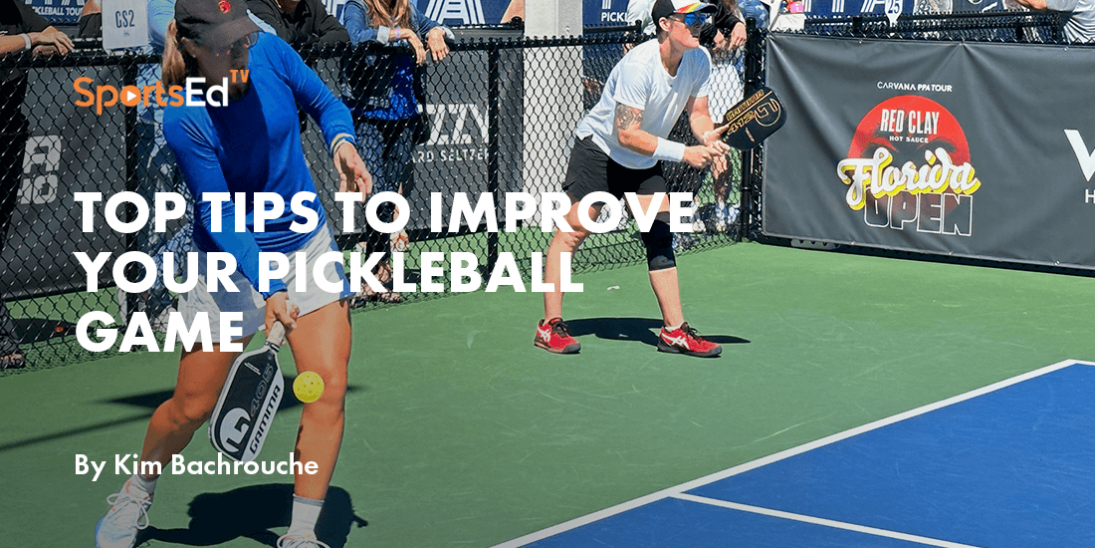Pickleball
Welcome and thanks for visiting...

Pickleball for Beginners
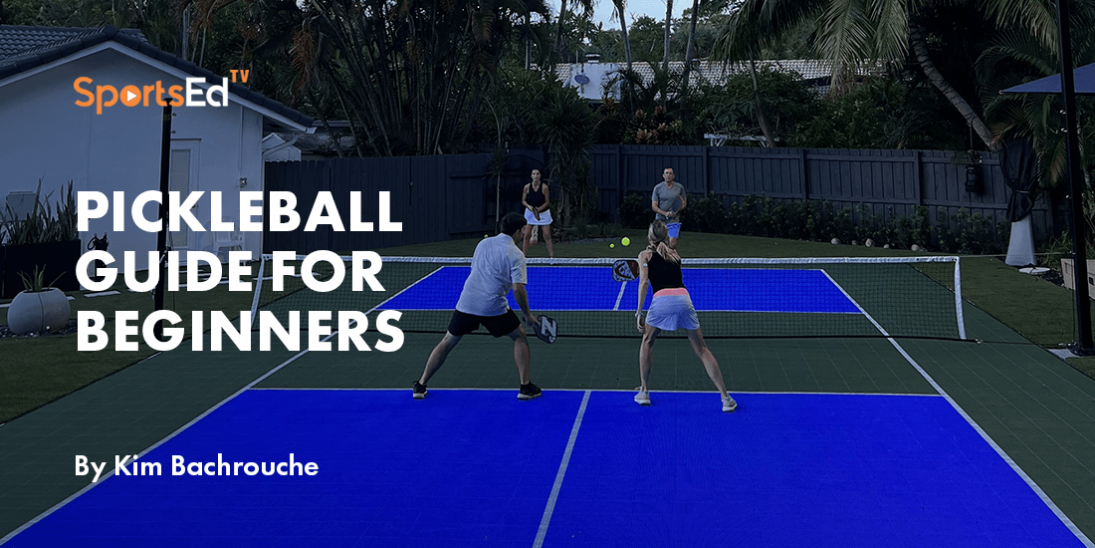
Are you looking for a fun and social way to stay active? Look no further than pickleball! This exciting sport combines elements of tennis, badminton, and ping-pong to create a unique and fast-paced game that's easy to learn and play. Whether you're a seasoned athlete or a complete beginner, pickleball is a great way to get exercise, meet new people, and challenge yourself. In this beginner's guide, we'll cover everything you need to know to get started playing pickleball, from the basic rules and equipment to tips for improving your skills and having fun on the court. Let's get started!
What is Pickleball?
Pickleball is a paddle sport that combines elements of tennis, badminton, and ping-pong. It is played with a hard paddle and a small plastic ball with holes, similar to a wiffle ball. The game is typically played in doubles on a court that is roughly the size of a badminton court. The net is set at a height of 36 inches at the ends and 34 inches at the center. The objective of the game is to hit the ball over the net and into the opponent's side of the court without them being able to return it. The game starts with a serve and points are scored when the opposing team fails to return the ball, hits the ball out of bounds, or commits a fault. The game is played to 11 points, and the team that wins must have a lead of two points.
Where does the name pickleball come from?
Pickleball, the oddly named combination of tennis, paddleball, and whiffle sports began when Pritchard's wife Joan named it in 1965 after the poorest performing rowers who populated what crew aficionados called the pickle boat. She was a competitive rower.
The spread of the sport is attributed to its popularity within community centers, physical education classes, YMCA facilities, and retirement communities.
The Pickleball court
The pickleball court may look like a mini tennis court, but it has its unique features and rules. The court is divided in the middle by a net, and on each side, there is a 7-x-20-foot area directly in front of the net called the non-volley zone (NVZ), also known as the kitchen. The net is 2 inches lower than a tennis net, but the height relative to the size of the court can still make it challenging to clear. While historians aren't sure how the kitchen got its name, players know it as a crucial area where certain shots are not allowed. The court between the kitchen and the baseline is divided into two service boxes by the centerline, with the non-volley zone line, also known as the kitchen line, marking the boundary between the kitchen and the service boxes.
The baselines, sidelines, and center lines divide the pickleball court into three main sections and the net divides the playing area into identical halves.
At the sideline posts, the pickleball net is 36 inches high. It gradually lowers to 34 inches at the court center. The length of the net is 20 feet.
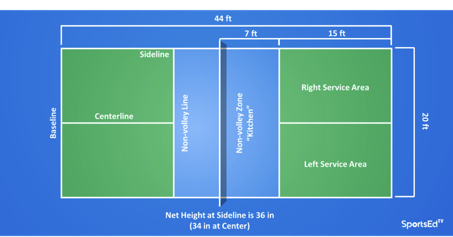
Pickleball Equipment: The Essentials
To play pickleball, you'll need some basic equipment. Here are the essential items you'll need:
Paddle: Pickleball paddles are specially made for the sport and come in a variety of materials such as composite, graphite, hybrid, and carbon. It's important to find a paddle with a comfortable grip and handle that suits your playing style. Avoid buying a wooden paddle or the cheapest one on the market as most players end up with multiple paddles in their bag. Check out our complete article on how to choose a pickleball paddle.
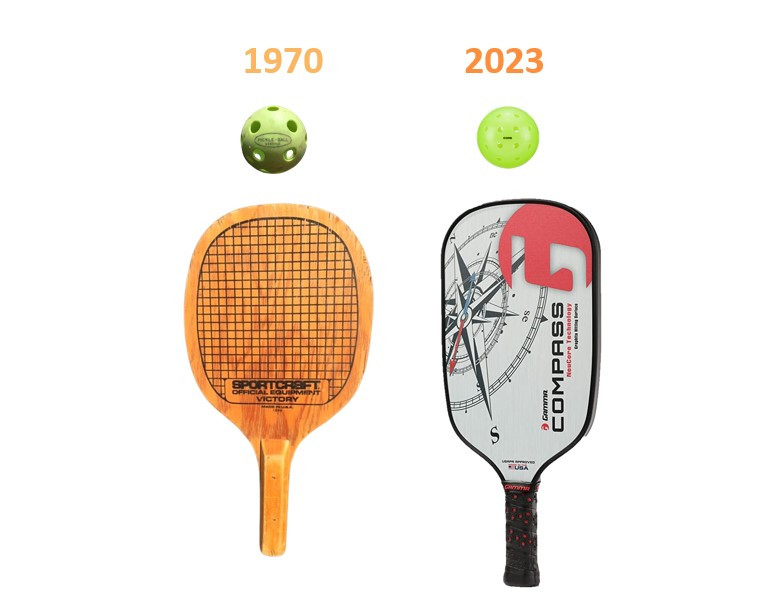
Balls: All pickleball balls are whiffle balls, but there are different varieties for indoor and outdoor play. Indoor balls are lighter and have a softer and quieter bounce with fewer holes for easier control, while outdoor balls are heavier and better for power. It's recommended to keep spare balls in a cooler with ice to maintain consistency during warm weather.
Shoes: Proper footwear is crucial for making the lateral movements required in pickleball. Court or tennis shoes with good support and no lip on the sides are recommended. It's best to buy two pairs and alternate them to prolong their lifespan. Finding the right shoes is really important and we wrote a full guide on how to choose the right pickleball shoes.
Clothing: Pickleball clothing varies depending on personal style, but it's important to wear comfortable and breathable attire that allows for easy movement. In the winter, players may wear gloves, scarves, caps, leggings, or sweatpants for warmth. Sun protection is also important, so wearing a hat or visor and clear or tinted eye protection is recommended.
Drink with Electrolytes: Staying hydrated during play is essential, so it's recommended to bring a drink with electrolytes to replenish fluids lost through sweating.
Basic rules in pickleball
Pickleball, like any sport, has a set of rules that players must follow to ensure a fair and enjoyable game for all. While there are many rules in pickleball, as a beginner, you'll start with the basics. As you progress, you'll learn the more intricate rules and may even have friendly arguments with your opponents about what's allowed and what's not. But don't worry, it's all part of the fun!
At the start of each point, a serve is made from the right-hand court and the serve must clear the non-volley zone. Once the serve is made, the opposing team must hit the ball back over the net and into the court. The ball must bounce once on each side of the court before players can hit it in the air. Players continue hitting the ball back and forth until a fault is made, which results in the loss of the point. Common faults include hitting the ball out of bounds, hitting the ball into the net, or stepping into the non-volley zone and hitting the ball before it bounces. If the serving team wins the point, the same player serves again from the opposite side of the court. If the receiving team wins the point, they become the serving team and alternate serving for the remainder of the game.
- The game starts with a serve, and the serving team must serve the ball diagonally to the opposite court.
- The receiving team must let the ball bounce once before returning it, and then the serving team must also let the ball bounce once before returning it.
- After the two bounces, the ball can be hit in the air (a volley).
- Points are only scored by the serving team, and the game is usually played up to 11 points, with a two-point lead required to win.
- The non-volley zone or its nickname “The Kitchen” is the court area within 7 feet on both sides of the net extending to both sidelines. As its name indicated no volley—striking the balls before it bounces—is allowed in that zone. A groundstroke—the ball having bounced—is permitted.
- The ball is considered out of bounds if it lands outside of the court lines or hits the net and does not make it over.
- The server must serve from behind the baseline and must keep at least one foot behind the baseline while serving.
- The serve must be underhand, and the paddle must make contact with the ball below the waist.
The Two-Bounce rule in pickleball
In pickleball, the two-bounce rule is a fundamental aspect of the game that sets it apart from other racket sports. This rule mandates that after the ball is served, the receiver must allow it to bounce before hitting it. Similarly, the serving team must also let the ball bounce after the return shot before attempting a volley. Once the ball has bounced twice, players can legally volley it by hitting it out of the air before it bounces. This rule prevents the serve-and-volley strategy used in tennis and levels the playing field, making it harder for players to dominate at the start of each rally. To remember the rule, beginners can count the bounces in their heads or think of it as requiring the ball to bounce on each side of the court before volleying.
Scoring in Pickleball
Pickleball beginners need to know how to accurately keep score. Here are simplified scoring rules for pickleball and how to call the score.
Pickleball can be played in singles and doubles formats, each having slightly different rules.
Scoring in pickleball goes to 11 points. It can sometimes go to 15 points in tournaments. You can only score a point when your team is serving and when you do, you switch positions with your partner. Also, you have to win the game by 2 points.
Explaining Doubles Rules in Pickleball:
Only when a team is serving can it score points. Points cannot be scored by the receiving team. Serve is held or continued by the serving team until the serving team commits a fault. When the pickleball touches any part of the non-volley zone of the court on the serve a fault is recorded. A fault also includes the line, out of bounds, or when the ball does not clear the net or is volleyed from the non-volley zone before a bounce has occurred on each side of the net.
Positions of Players at the Start of a Doubles Game
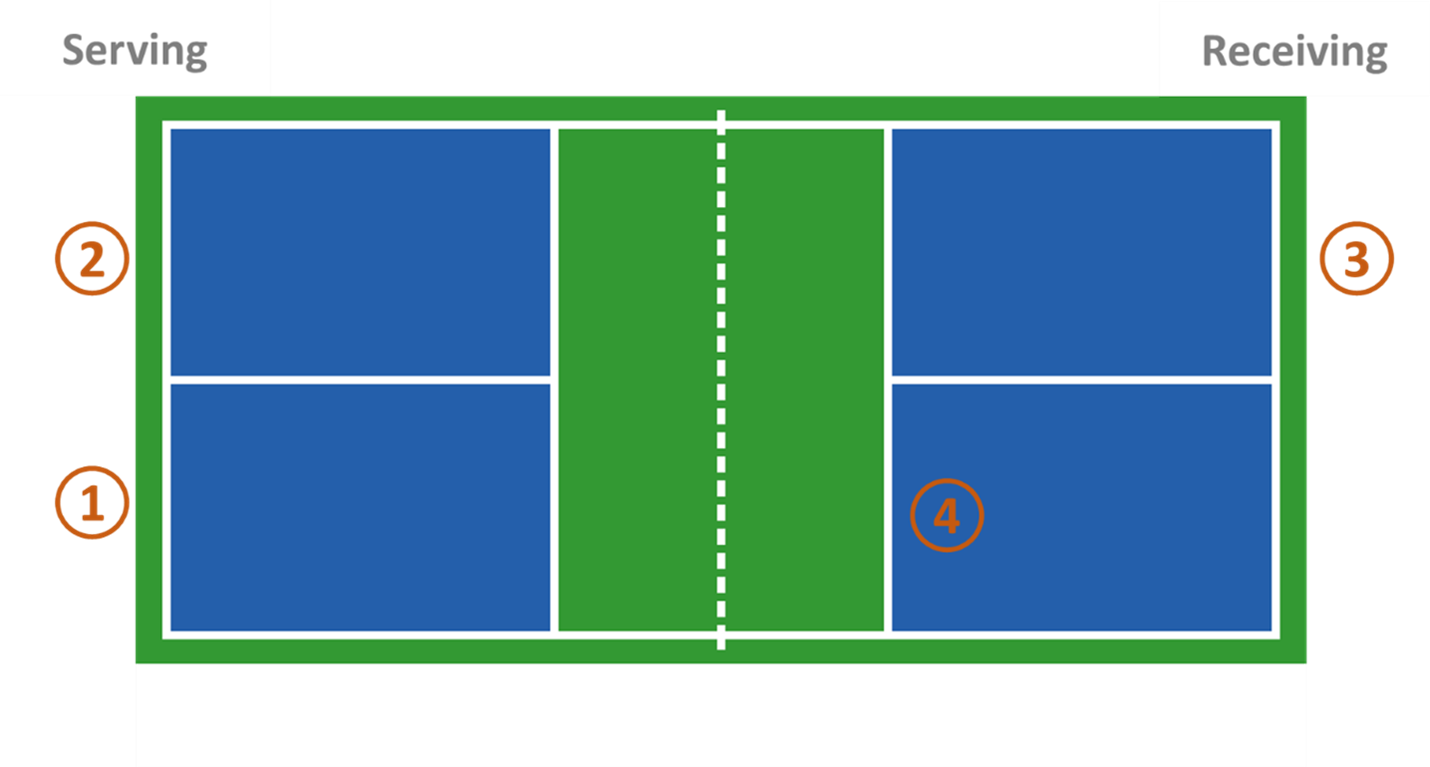
OR
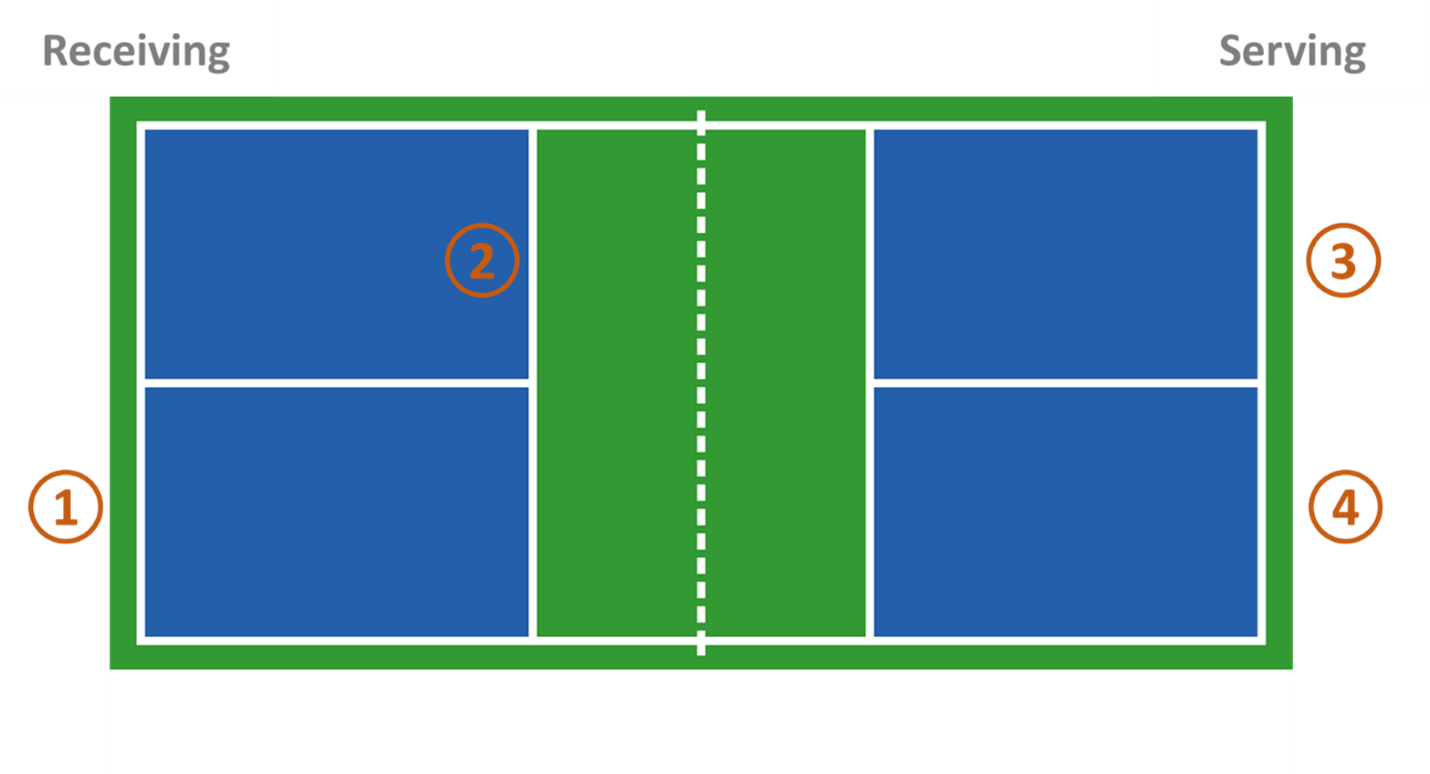
The player on the right side serves to the diagonally opposite court at the start of a pickleball game.
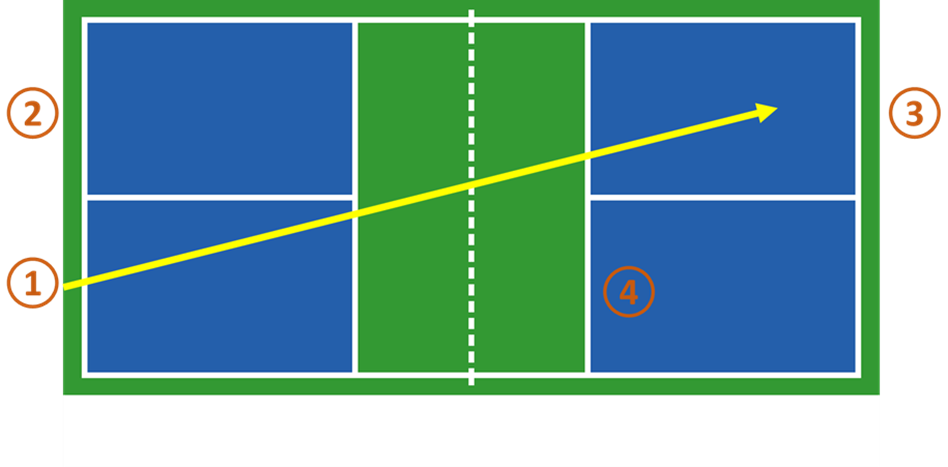
After scoring a point the server moves to the court's left side and diagonally serves to the opposite side. Each time a point is scored players move to the other side for the next serve. If a serving team fails to make a point, the players do not alternate side moves. The receiving team does not alternate sides whether or not a point is scored. Only when a fault occurs does the serve switch to the second server. Serve is relinquished to the receiving team when a second fault occurs, and the players stay in the same position. Throughout the game, the player on the right serves first.
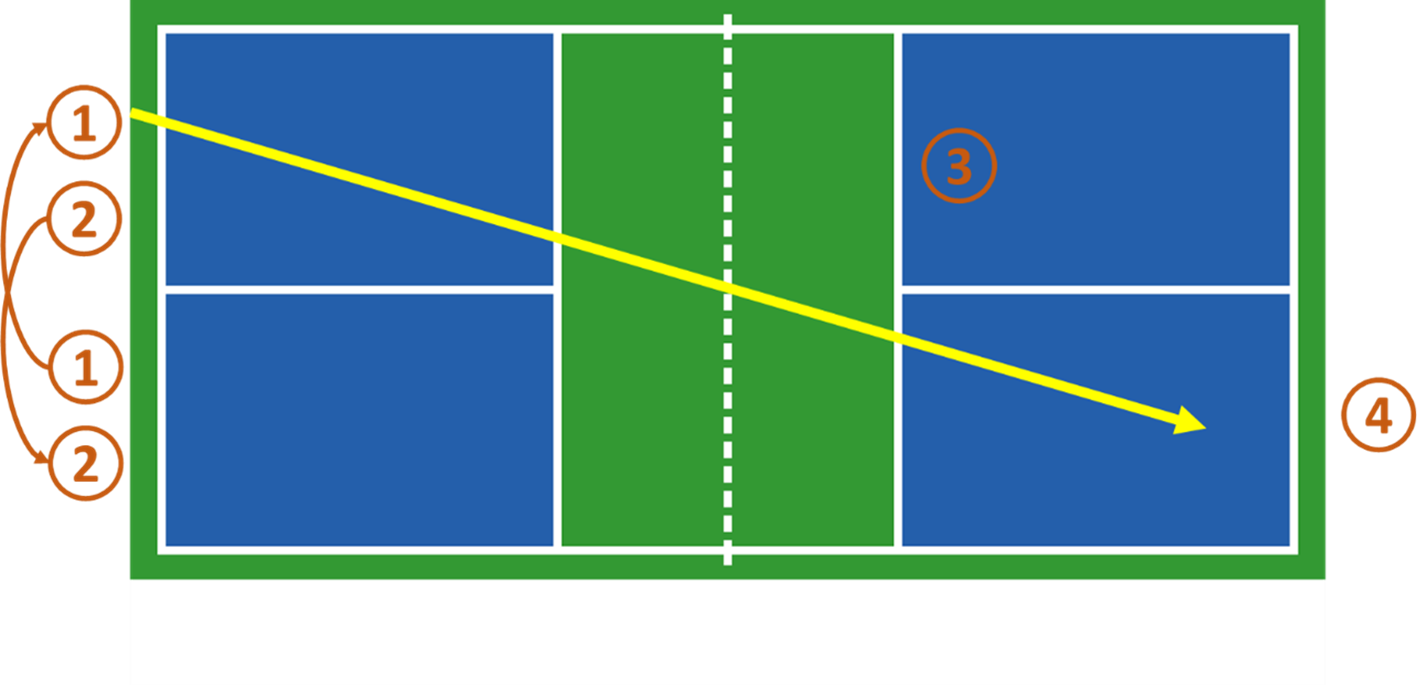
Calling the Score in pickleball
Three numbers are called in pickleball when playing doubles. The proper way is to call the server score, then the receiver score, and only in doubles the number of which serve is being played, one or two. At the beginning of a pickleball match, the score is called "zero, zero, two” meaning that as soon as the serving team commits a fault the opposition gets to serve.
One or two—the server number—applies only for that service turn. When the serve turns to the opposing team, whoever is on the right side depending on the score becomes the first server.
New pickleball players sometimes erroneously assume the players keep the same serving number throughout the game. The serving number goes to the player on the right when the fault-changing serve occurs.
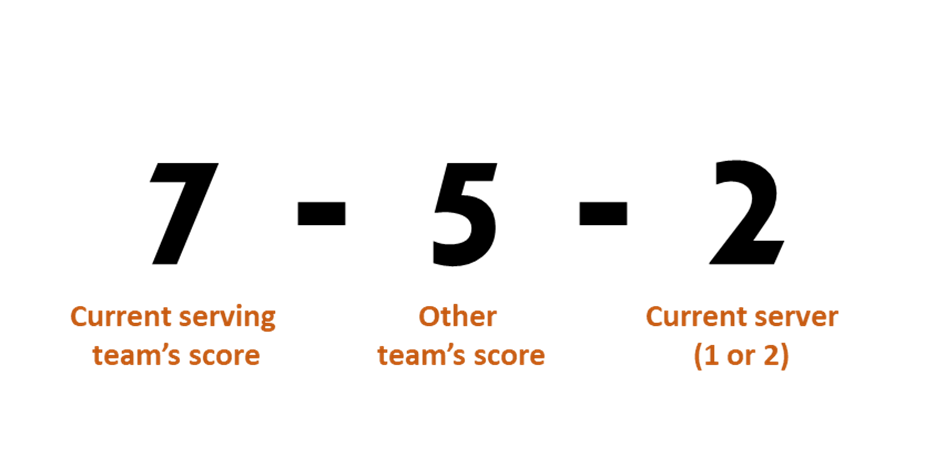
There exists a first server exception and it is designed to minimize the advantage of the game's first-serving team. Only one player—the one on the right—may serve on the first service turn of the game. Since the serve goes to the receiving team that player is designated as the second service when that player loses the serve. 0-0-2 is the call that is made at the beginning of the game. The 2 indicates the second server and indicates that when the serve is lost the serve moves to the receiving team. An even score dictates that the player who served first in the game must be on the right or even side of the pickleball court and the odd or left side when the score is odd.
Explaining Pickleball Singles Scoring
Scoring a singles pickleball game is similar to doubles scoring except there is no second server on the serving team. If the server score is an even number, the serve should come from the right service court, and if it is an odd score from the left service court. The server’s call is called before the receiver’s score.
Basic Pickleball Shots
As a beginner to pickleball, you might think that it's just about hitting the ball back and forth over the net. But as you start playing more and learning the basics, you'll discover that there are many different shots that you can use to control the game and outsmart your opponents. In this chapter, we'll go over the most common shots in pickleball, including the serve, and explain how they work and when to use them. By mastering these shots, you'll be able to improve your game and have more fun on the court. So, let's get started!
The serve in Pickleball
The serve is a crucial part of the game, and a good serve can give you a big advantage. In pickleball, the serve must be hit underhand, with a low-to-high swing motion, and the ball must be struck below the waist. Your paddle cannot be above your wrist level when striking the ball.
It's important to keep in mind that the serve must be made from behind the baseline and between the imaginary extensions of the centerline and sideline. At the moment you hit the ball, both feet cannot be inside the court boundaries, and at least one foot must be touching the ground behind the baseline. Additionally, you cannot stand outside the designated service area on your side of the court.
One thing to note is that you only get one service attempt. If your serve goes into the net or out of bounds, you lose your serve, and the point goes to the other team. A good serve is one that clears the net and lands in the opponent's service box, making it harder for them to return the ball. With practice, you can develop a consistent and reliable serve that will set you up for success in the game.
Read our full article on how to serve in pickleball
The return of serve in pickleball
Returning the serve is an important aspect of pickleball as it sets the tone for the rest of the point. Once your opponent has successfully served the ball, you must return it over the net and into the opponent's court. A successful return requires proper footwork, positioning, and shot selection. You should aim to hit your return deep into your opponent's court to give yourself more time to get into position and prepare for the next shot. If your return is too short or goes out of bounds, it will be considered a fault, and your opponent will earn a point. Remember, the return of serve is your chance to take control of the point, so make sure to focus and give it your best effort.
The groundstroke
This is the most common shot in pickleball. You hit the ball after it bounces, and the goal is to keep the ball low and deep in your opponent's court.
The Volley in pickleball
The volley applies to any action at any height and from anywhere you are positioned as long as the ball has not bounced, however, it is a fault if done so from within the non-volley zone (kitchen). Hitting a volley, when possible, is a great way to take time away from your opponents. An overhead smash is a great example of a volley. Watch the video on volley.
The Dink
The Dink is a soft stroke hit up at the kitchen (non-volley zone) that lands in the opponents’ kitchen. They can be hit with both offensive and defensive intent based on the depth of their hit, the direction, and the spin. They’re meant to keep you on the point and looking for a pop-up from your opponents you can take advantage of to possibly win the point.
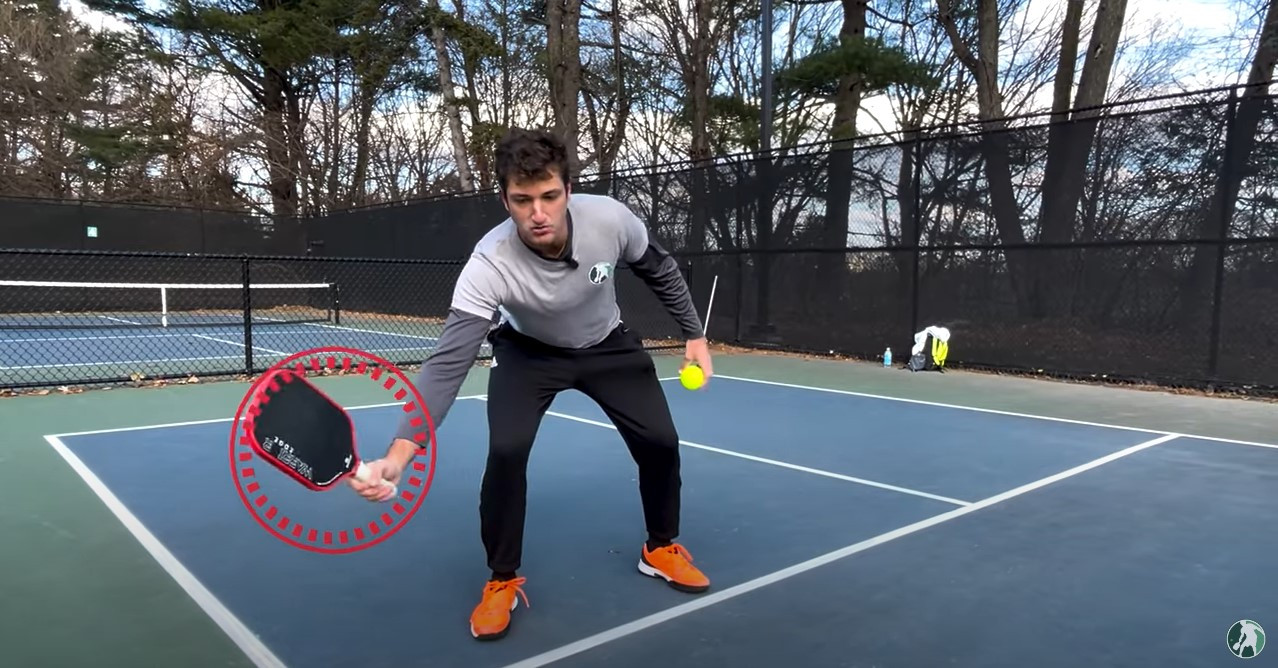
The Lob in Pickleball
The lob is a shot hit high, meant to travel over the opponent's head and force a retreat to the deeper end of the opposite side that will tend to reset the tempo of a point. However, if not executed well a lob can be returned by the opponent jumping, or often only taking 1 or 2 steps back, to smash the ball, which can be a dangerous attack. Given the risk, players should make sure to learn how to execute an effective lob that will slow down aggressive play and allow them to reclaim a near-net offensive position.
The Overhead Smash
The smash is pickleball’s most effective point winner. Struck with strength when your opponent’s return pops up over your head and you can fully extend and strike the ball with speed. An overhead smash hit from the non-volley zone line should not have any wrist movement other than fixing the paddle at the correct angle – when possible, the player should contact the ball in front of their body with downward rotation off the shoulder. Accuracy is earned with practiced repetition.
As you become more experienced with the game, you will discover a variety of advanced shots like the Erne or the ATP. However, it's important to start with the basics. Here's a comprehensive list of the pickleball shots and their explanations.
Basic strategies in pickleball
One of the most important strategies in pickleball is to keep the ball low and slow over the net. This forces your opponents to hit the ball up, which allows you to hit a more aggressive shot. Another important strategy is to always be aware of your position on the court, especially when at the non-volley zone. Staying back from the line when your opponents are hitting soft shots will give you more time to react and make a better shot. On the other hand, moving closer to the line when your opponents are hitting hard shots will help you to take advantage of the speed and power of the ball. Finally, communication with your partner is key to a successful game. Always communicate with your partner to coordinate your movements, strategy, and shot selection. By following these basic strategies, you can improve your game and become a more successful pickleball player.
If you've made it this far, you should now have a basic understanding of the game of pickleball. From the court layout to the rules and basic shots, you've got the foundation to start playing this fun and exciting sport.
Remember, as with any sport, practice makes perfect. Take the time to develop your skills, and you'll soon be playing like a pro.
If you want to learn more, there are many resources available to you. Here are some useful links:
- Instructional Pickleball Video Library
- Pickleball Blogs
- Pickleball Camps for Adults
- Pickleball Organizations
- USA Pickleball




